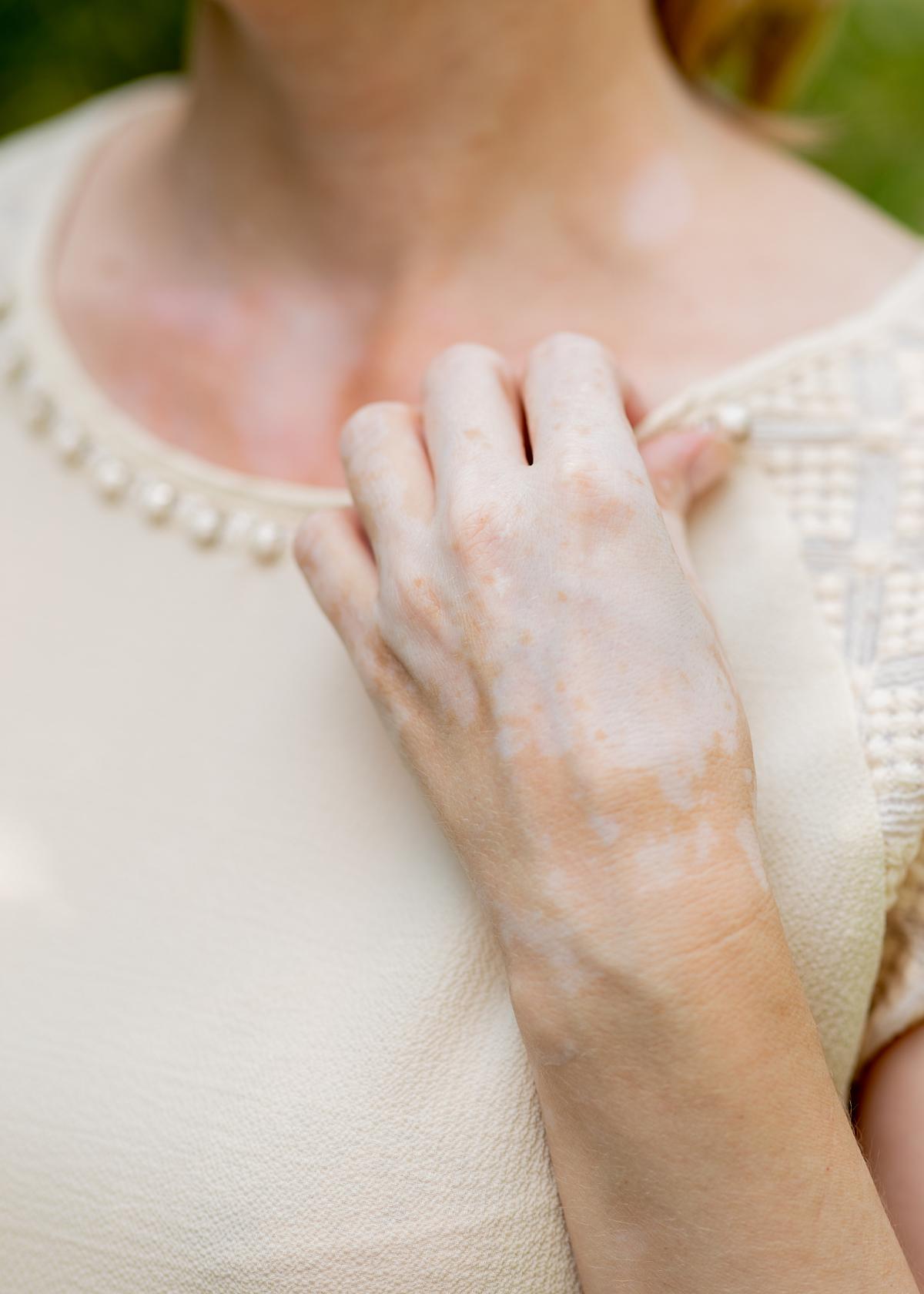Have you ever noticed dark spots on your skin that just won't fade? These patches, known as hyperpigmentation, are a common condition that leaves parts of the skin darker than the surrounding areas.
In this article, we will delve into the details of three main types of hyperpigmentation - Sunspots (actinic lentigines), Melasma, and Post-Inflammatory Hyperpigmentation.
So stick around if you want to educate yourself on these dermatological conditions and learn how they can be treated or prevented.
The Three Types of Hyperpigmentation
There are three main types of hyperpigmentation: age spots (medically known as actinic lentigines), post-inflammatory hyperpigmentation, and melasma.
In the following sections, we will explore each of these types of hyperpigmentation in greater detail, looking at their causes, characteristics, prevention, and treatment options.
The information provided can help you identify which type of hyperpigmentation you may have if you are experiencing dark patches on your skin. Let's take a complete look at 3 different types of hyperpigmentation that you can usually see on normal skin tone:
Age Spots (Medically: Actinic Lentigines)

Age spots, also known as actinic lentigines in medical terms, are one of the three main types of hyperpigmentation. These dark spots on the skin commonly occur due to prolonged sun exposure over time.
They are more common among older individuals, hence the name "age spots." Age spots typically appear on areas of the body that receive the most sun exposure, such as the face, hands, arms, and shoulders.
While age spots are generally harmless and do not require treatment, some people may choose to lighten or remove them for cosmetic reasons.
Post-Inflammatory Hyperpigmentation

Post-inflammatory hyperpigmentation is a type of hyperpigmentation that occurs after an injury or inflammation of the skin, such as acne or eczema. It results in flat, darkened patches of skin that can vary in size and color.
This condition is caused by an overproduction of melanin, the pigment responsible for giving color to our skin, hair, and eyes. Post-inflammatory hyperpigmentation usually fades over time but can take several months or even years to completely disappear.
Various treatment options are available to help fade these dark spots faster, including topical creams containing ingredients like hydroquinone or retinoids, chemical peels, and laser therapy.
Melasma

Melasma is a type of hyperpigmentation that is often triggered by hormonal changes in the body, such as during pregnancy or due to the use of birth control pills. It appears as dark patches on the skin, typically on the face, and can vary in size and color.
Melasma is more common in women than men, and those with darker skin tones are more susceptible to developing it. While melasma does not pose any health risks, it can be a cosmetic concern for many individuals.
Treatment options for melasma include topical creams containing ingredients like hydroquinone or tretinoin, chemical peels, and laser therapy. Protecting your skin from sun exposure is crucial to prevent further melasma, and using sunscreen daily is recommended.
Remember: Melasma occurs when there are hormonal changes in the body, leading to dark patches on the skin that can affect one's appearance. Although it doesn't pose any health risks, treatment options like topical creams and laser therapy can help reduce its appearance.
Prevention and Treatment
To prevent skin pigmentation, it is important to protect your skin from the sun, use sunscreen daily, and avoid picking up acne or other skin conditions.
Treatment options for hyperpigmentation include topical creams, chemical peels, laser therapy, and microdermabrasion. The following are some ways to treat hyperpigmentation:
Ways to Prevent Hyperpigmentation

To prevent hyperpigmentation, you can take the following steps:
- Protect your skin from excessive sun exposure by wearing sunscreen with a high SPF and reapplying it regularly.
- Use protective clothing such as hats, long-sleeved shirts, and sunglasses when going outdoors.
- Avoid prolonged exposure to the sun, especially during peak hours.
- Seek shade or stay indoors during the sunniest parts of the day.
- Be cautious when using certain medications that can increase skin sensitivity to sunlight.
- Treat acne promptly to reduce the risk of post-inflammatory hyperpigmentation.
- Avoid picking or scratching at your healthy skin, as it can lead to dark spots.
- Use gentle skincare products and avoid harsh chemicals that may irritate your skin.
- Maintain a healthy lifestyle by eating a balanced diet and staying hydrated.
- Follow proper skincare routines, including cleansing, moisturizing, and exfoliating.
Different Treatment Options

There are several treatment options available for hyperpigmentation. These include:
- Topical creams: Over-the-counter or prescription creams containing ingredients like hydroquinone, retinoids, corticosteroids, or azelaic acid can help lighten dark spots and even out skin tone.
- Laser therapy: Laser treatments use intense beams of light to target and break up pigment in the skin, allowing it to fade over time.
- Chemical peels: A chemical solution is applied to the skin to exfoliate the top layer and promote the growth of new, evenly pigmented skin cells.
- Microdermabrasion: This procedure involves gently exfoliate skin top layer with fine crystals or a diamond-tipped wand to improve overall texture and reduce pigmentation.
- Cryotherapy: Liquid nitrogen is applied to freeze and destroy hyperpigmented areas of skin, which eventually peel off and reveal lighter, more even-toned skin.
- Intense pulsed light (IPL) therapy: IPL uses high-intensity pulses of light to target specific areas of hyperpigmentation, stimulating collagen production and reducing dark spots.
Diagnosis and Outlook

Diagnosing hyperpigmentation involves a visual examination by a dermatologist. While it can be challenging to treat, there are various treatment options available to help lighten and even out the skin tone.
Read on to learn more about diagnosis and outlook for hyperpigmentation.
How Is Hyperpigmentation Diagnosed?
Hyperpigmentation is usually diagnosed through a visual examination by a dermatologist. The doctor will assess the affected areas of the skin and ask about any specific symptoms or changes in pigmentation.
They may also inquire about potential risk factors, such as sun exposure or hormonal changes. In some cases, additional tests may be conducted to rule out underlying medical conditions that could be causing the hyperpigmentation.
These tests may include blood tests or biopsies of the skin. It is important to seek medical advice for proper diagnosis and treatment options tailored to your specific condition.
What Is the Outlook for Hyperpigmentation?
The outlook for hyperpigmentation varies depending on the type and severity of the condition. In many cases, hyperpigmentation can be effectively managed with treatments such as topical creams, laser therapy, chemical peels, and microdermabrasion.
It is important to note that while these treatments can help lighten dark spots and even out skin tone, they may not provide permanent results. Additionally, prevention plays a crucial role in managing hyperpigmentation.
Protecting the skin from sun exposure and using sunscreen daily can help prevent further darkening of pigmented areas. With proper care and treatment, individuals with hyperpigmentation can achieve significant improvement in their skin's appearance.
Frequently Asked Questions
Hyperpigmentation is a common skin condition characterized by dark patches, liver spots, or dark spots on the skin that are the result of excess melanin production. There are three main types of hyperpigmentation: melasma, post-inflammatory hyperpigmentation, and sun spots (also called solar lentigines).
In the frequently asked questions (FAQs) section below, we will define each type of hyperpigmentation, discuss their causes, and provide an overview of how they can be treated.
What are the three types of hyperpigmentation?
The three main types of hyperpigmentation include solar lentigines, cafe-au-lait macules, and postinflammatory hyperpigmentation.
What causes skin darkening in the case of hyperpigmentation?
Hyperpigmentation causes skin darkening due to excess melanin production, leading to pigmented patches and uneven skin tone.
Are freckles a type of hyperpigmentation?
Yes, freckles are considered a form of one of the pigmentation disorders called solar lentigines, which is one type of hyperpigmentation.
Can acne scars lead to any type of Hyperpigmentation?
Yes, post-acne dark spots can become a dermatologic condition known as postinflammatory hyperpigmentation, resulting in blemishes on an individual's skin complexion.
How can I treat my hypersensitive conditions like cafe-au-lait macules or other forms?
Several treatments for managing various types of hypopigmentations exist, including creams that target excess melanin production and more advanced dermatological procedures, which you may discuss with your healthcare provider. Always prioritize your skin health by using broad-spectrum sunscreen and preventing upper lip dead skin cells.
Conclusion
Hyperpigmentation is a common condition that can result in darkened patches of skin. The three main types of hyperpigmentation are sun spots (actinic lentigines), melasma, and post-acne dark spots/post-inflammatory hyperpigmentation.
While each type has its own causes and characteristics, there are various treatment options available to help manage this condition. It's important to protect the skin from sun exposure and seek professional advice for an accurate diagnosis and personalized treatment plan.



